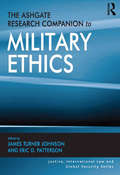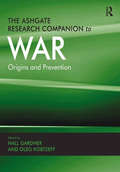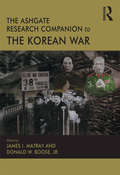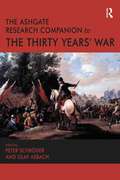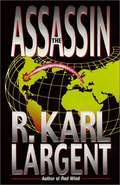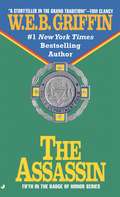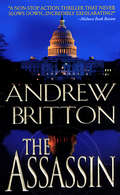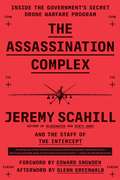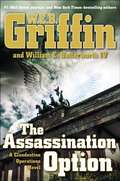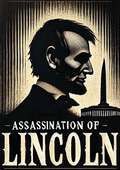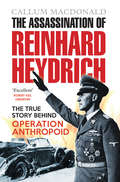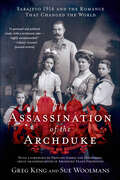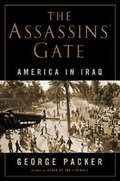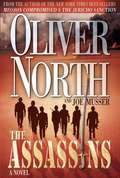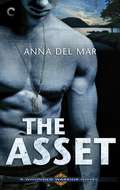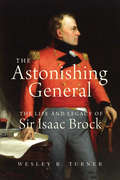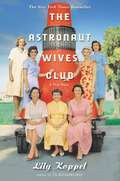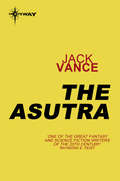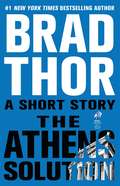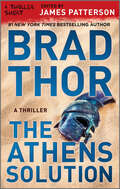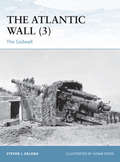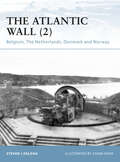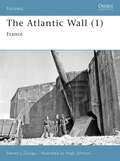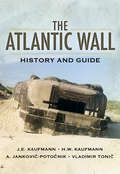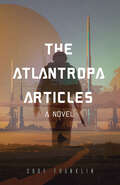- Table View
- List View
The Ashgate Research Companion to Military Ethics (Justice, International Law and Global Security)
by Eric D. Patterson James Turner JohnsonThis Companion provides scholars and graduates, serving and retired military professionals, members of the diplomatic and policy communities concerned with security affairs and legal professionals who deal with military law and with international law on armed conflicts, with a comprehensive and authoritative state-of-the-art review of current research in the area of military ethics. Topics in this volume reflect both perennial and pressing contemporary issues in the ethics of the use of military force and are written by established professionals and respected commentators. Subjects are organized by three major perspectives on the use of military force: the decision whether to use military force in a given context, the matter of right conduct in the use of such force, and ethical responsibilities beyond the end of an armed conflict. Treatment of issues in each of these sections takes account of both present-day moral challenges and new approaches to these and the historical tradition of just war. Military ethics, as it has developed, has been a particularly Western concern and this volume reflects that reality. However, in a globalized world, awareness of similarities and differences between Western approaches and those of other major cultures is essential. For this reason the volume concludes with chapters on ethics and war in the Islamic, Chinese, and Indian traditions, with the aim of integrating reflection on these approaches into the broad consideration of military ethics provided by this volume.
The Ashgate Research Companion to War: Origins and Prevention
by Hall Gardner Oleg KobtzeffMany different social scientists have been challenged by the origins of wars, their immediate causes and the mechanisms leading to the breakdown of peaceful relations. Many have speculated whether conflicts were avoidable and whether alternative policies might have prevented conflict. The Ashgate Research Companion to War provides contributions from a number of theorists and historians with a focus on long term, systemic conflicts. The problèmatique is introduced by the Editors highlighting the need for interdisciplinary approaches to the study of war as a global phenomenon. The following 29 essays provide a comprehensive study guide in four sections: Part I explicates differing theories as to the origins of war under the general concept of 'polemology'. Part II analyzes significant conflicts from the Peloponnesian wars to World War II. Part III examines the ramifications of Cold War and post-Cold War conflict. Part IV looks at long cycles of systemic conflict, and speculates, in part, whether another global war is theoretically possible, and if so, whether it can be averted. This comprehensive volume brings us a much needed analysis of wars throughout the ages, their origins, their consequences, and their relationship to the present. A valuable understanding that is ideal for social scientists from a variety of backgrounds.
The Ashgate Research Companion to the Korean War
by Donald W. BooseThis essential companion provides a comprehensive study of the literature on the causes, course, and consequences of the Korean War, 1950-1953. Aimed primarily at readers with a special interest in military history and contemporary conflict studies, the authors summarize and analyze the key research issues in what for years was known as the 'Forgotten War.' The book comprises three main thematic parts, each with chapters ranging across a variety of crucial topics covering the background, conduct, clashes, and outcome of the Korean War. The first part sets the historical stage, with chapters focusing on the main participants. The second part provides details on the tactics, equipment, and logistics of the belligerents. Part III covers the course of the war, with each chapter addressing a key stage of the fighting in chronological order. The enormous increase in writings on the Korean War during the last thirty years, following the release of key primary source documents, has revived and energized the interest of scholars. This essential reference work not only provides an overview of recent research, but also assesses what impact this has had on understanding the war.
The Ashgate Research Companion to the Thirty Years' War
by Olaf Asbach Peter SchröderThe Thirty Years’ War (1618-1648) remains a puzzling and complex subject for students and scholars alike. This is hardly surprising since it is often contested among historians whether it is actually appropriate to speak of a single war or a series of conflicts. Similarly emphasis is also put on the different motives for going to war, as conflicting religious and political interests were involved. This research companion brings together leading scholars in the field to synthesize the range of existing research on the war, which is still fragmented and divided along national historical lines, and to further explore the complexities of the conflict using an innovative comparative approach. The companion is designed to provide scholars and graduate students with a comprehensive and authoritative overview of research on one of the most destructive conflicts in European history.
The Assassin
by R. Karl LargentIt began when satellite photos revealed certain anomalies along the border of Saudi Arabia and Jordan -- entire areas where there was no longer any sign of life. That, combined with reports from Iraq that some nomadic tribes had been decimated by a mysterious illness, could mean a global nightmare was becoming a reality -- someone was perfecting a more effective, more deadly form of germ warfare. But who?The American government had to get to the truth behind the lies and the rumors, and quickly. With no time to lose, they turned to the only man who could be trusted to handle the volatile situation -- reluctant agent T.C. Bogner. Only Bogner could hope to infiltrate the circle of arms dealers and survive long enough under cover to track down the source of the deadly, unholy gas. But even for Bogner it was a near-impossible mission...with the fate of millions hanging in the balance.
The Assassin (Badge of Honor #5)
by W.E.B. GriffinA political assasin is ready to make his move. The police department's only clue is a single, perfectly typed bomb threat. And worse yet, the police aren't sure they can trust their own people. In a few short days, the corruption of one cop--and the madness of an assasin--could blow the whole city sky high...
The Assassin: The American; The Assassin; The Invisible; The Exile (A\ryan Kealey Thriller Ser. #2)
by Andrew BrittonThe New York Times bestseller from the author of The American. “A non-stop action thriller that never slows down . . . incredibly exhilarating.” —Midwest Book ReviewA weapon of catastrophic destruction. A nation on the brink of unspeakable disaster. And the ultimate enemy lies closer to home than anyone realizes.Only maverick CIA agent Ryan Kealey sees the threat for what it really is—but Washington refuses to listen. With the lives of millions at stake, Kealey has only one option: to take matters into his own hands. And the clock is ticking . . .Supercharged and fiercely intelligent, The Assassin is an action-packed international thriller where no one can be trusted—and the final aftershocks are felt until the very last page.Praise for Andrew Britton's The American“Brilliantly well-written with plotting sharper than a fence full of razor wire, a sizzling page-turner . . . even Washington insiders will be reading this thriller not once, but twice!” —Brad Thor, USA Today bestselling author“A terrifying and gripping journey into the mind of a terrorist.” —Stephen Frey, New York Times bestselling author“Like Tom Clancy . . . a thriller that makes current terrorist threats all too real . . . highly recommended.” —Library Journal (starred review)
The Assassination Complex: Inside the Government's Secret Drone Warfare Program
by Jeremy Scahill The Staff of The InterceptMajor revelations about the US government's drone program--bestselling author Jeremy Scahill and his colleagues at the investigative website The Intercept expose stunning new details about America's secret assassination policy.When the US government discusses drone strikes publicly, it offers assurances that such operations are a more precise alternative to troops on the ground and are authorized only when an "imminent" threat is present and there is "near certainty" that the intended target will be killed. The implicit message on drone strikes from the Obama administration has been trust, but don't verify. The online magazine The Intercept exploded this secrecy when it obtained a cache of secret slides that provide a window into the inner workings of the US military's kill/capture operations in Afghanistan, Yemen, and Somalia. Whether through the use of drones, night raids, or new platforms yet to be employed, these documents show assassination to be central to US counterterrorism policy. The classified documents reveal that Washington's fourteen-year targeted killing campaign suffers from an overreliance on flawed signals intelligence, an apparently incalculable civilian toll, and an inability to extract potentially valuable intelligence from terror suspects. This campaign, carried out by two presidents through four presidential terms, has been deliberately obscured from the public and insulated from democratic debate. The Assassination Complex allows us to understand at last the circumstances under which the US government grants itself the right to sentence individuals to death without the established checks and balances of arrest, trial, and appeal. The book will include original contributions from Glenn Greenwald and Edward Snowden.
The Assassination Option
by William E. Butterworth W.E.B. GriffinFrom the #1 New York Times- and Wall Street Journal-bestselling author comes the dramatic second adventure in the brand-new Clandestine Operations series about the Cold War, the fledgling Central Intelligence Agency--and a new breed of warrior.In Top Secret, W.E.B. Griffin introduced a remarkable new cast of heroes as they found themselves on the front lines of an entirely different kind of war. Now, these men and women are going to find out what they've really gotten themselves into. James Cronley thought he had done well--he didn't know he'd done this well.His first successful mission for the about-to-be-official new Central Intelligence Directorate has drawn all kinds of attention, some welcome, some not. On the plus side, he's now a captain; promoted to Chief, DCI, Europe; and in charge of a top secret spy operation. On the minus side, a lot of people would like to know about that operation, including not only the Soviets, but his own Pentagon, as well as a seething J. Edgar Hoover.Cronley knows that if just one thing goes wrong, he's likely to get thrown to the wolves. As if that weren't enough pressure, complications are springing up on all sides. He's discovered a surprising alliance between the former German intelligence chief and, of all things, the Mossad. A German family that Cronley never knew he had has suddenly, and suspiciously, emerged. And he's due for a rendezvous with an undercover agent against the Soviets known only as Seven K.It's when he meets Seven K that he gets the real surprise.
The Assassination of President Lincoln: Lewis Payne, George A. Atzerodt, Edward...A. Mudd, Samuel Arnold, Michael O'Laughlin
by Benn Pitman United States Army Military CommissionThe Assassination of President Lincoln: And the Trial of the Conspirators David E. Herold, Mary E. Surratt, Lewis Payne, George A. Atzerodt by Benn Pitman is a comprehensive account of one of the most shocking events in American history. This meticulously documented volume provides an in-depth look into the tragic assassination of President Abraham Lincoln and the subsequent trial of those involved in the conspiracy.Pitman, a prominent stenographer, offers a unique perspective by presenting the official court transcripts and testimonies, providing readers with a detailed narrative of the legal proceedings. Through his precise recording, the book captures the atmosphere of the courtroom, the strategies of the defense and prosecution, and the dramatic revelations that emerged during the trial.The book delves into the lives and motives of the conspirators, including David E. Herold, Mary E. Surratt, Lewis Payne, and George A. Atzerodt, exploring their roles in the assassination plot and their ultimate fates. It sheds light on the complexities of the conspiracy, the broader implications for the nation, and the enduring impact on American history.Pitman’s work is not only a historical document but also a gripping narrative that brings to life the tension and drama of the time. It provides a thorough understanding of the legal and emotional aftermath of Lincoln’s assassination, making it an essential read for anyone interested in American history, legal studies, or the Civil War era.With its detailed accounts and authoritative documentation, "The Assassination of President Lincoln: And the Trial of the Conspirators" remains a vital resource for historians and enthusiasts seeking to comprehend the full scope of this pivotal moment in the nation's past.
The Assassination of Reinhard Heydrich
by Callum MacDonaldA &“gripping&” account of the killing of the high-level Nazi widely considered Hitler&’s likely successor (The New York Times). On June 4, 1942, one of the most powerful figures of the Nazi regime died in agony from wounds sustained during an assassination attempt in Prague. This is the story of the killing of Reinhard Heydrich, a man of extraordinary intelligence, ruthlessness, and ambition who had risen from obscurity to become head of the Nazi security police and Governor of Bohemia-Moravia. Regarded by many as Hitler&’s most likely successor, he was feared and hated even by other high-ranking Nazi officials. Heydrich&’s death caused shockwaves throughout the Nazi leadership, provoking ferocious reprisals against Czechs and Jews. Those who carried out the assassination were hunted down, and, trapped like rats in the cellar of a Prague church, they committed suicide rather than face the certainty of torture and execution at the hands of the S.S. Based on original archive material, interviews with surviving members of the Special Operations Executive who trained the Czech assassins in the United Kingdom, and Czech military intelligence, Callum MacDonald&’s book is a well-researched and gripping account of one of the most audacious assassinations of the Second World War. &“Aided by previously unpublished files of the British Foreign Office, English author MacDonald provides the most complete account yet of the assassination of Heydrich.&” —Kirkus Reviews
The Assassination of the Archduke: Sarajevo 1914 and the Romance That Changed the World
by Greg King Sue WoolmansDrawing on unpublished letters and rare primary sources, King and Woolmans tell the true story behind the tragic romance and brutal assassination that sparked World War IIn the summer of 1914, three great empires dominated Europe: Germany, Russia, and Austria-Hungary. Four years later all had vanished in the chaos of World War I. One event precipitated the conflict, and at its hear was a tragic love story. When Austrian heir Archduke Franz Ferdinand married for love against the wishes of the emperor, he and his wife Sophie were humiliated and shunned, yet they remained devoted to each other and to their children. The two bullets fired in Sarajevo not only ended their love story, but also led to war and a century of conflict.Set against a backdrop of glittering privilege, The Assassination of the Archduke combines royal history, touching romance, and political murder in a moving portrait of the end of an era. One hundred years after the event, it offers the startling truth behind the Sarajevo assassinations, including Serbian complicity and examines rumors of conspiracy and official negligence. Events in Sarajevo also doomed the couple's children to lives of loss, exile, and the horrors of Nazi concentration camps, their plight echoing the horrors unleashed by their parents' deaths. Challenging a century of myth, The Assassination of the Archduke resonates as a very human story of love destroyed by murder, revolution, and war.
The Assassins' Gate: America in Iraq
by George PackerAs the death toll mounts in the Iraq War, Americans are agonizing over how the mess started and what to do now. George Packer, a staff writer at The New Yorker, joins the debate with his thoughtful book The Assassins' Gate. Packer describes himself as an ambivalent pro-war liberal "who supported a war [in Iraq] by about the same margin that the voting public had supported Al Gore." He never believed the argument that Iraq should be invaded because of weapons of mass destruction. Instead, he saw the war as a way to get rid of Saddam Hussein and build democracy in Iraq, in the vein of the U.S. interventions in Haiti and Bosnia. How did such lofty aims get so derailed? How did the U.S. get stuck in a quagmire in the Middle East? Packer traces the roots of the war back to a historic shift in U.S. policy that President Bush made immediately after 9/11. No longer would the U.S. be hamstrung by multilateralism or working through the UN. It would act unilaterally around the world--forging temporary coalitions with other nations where suitable--and defend its status as the sole superpower. But when it came to Iraq, even Bush administration officials were deeply divided. Packer takes readers inside the vicious bureaucratic warfare between the Pentagon and State Department that turned U.S. policy on Iraq into an incoherent mess. We see the consequences in the second half of The Assassins' Gate, which takes the reader to Iraq after the bombs have stopped dropping. Packer writes vividly about how the country deteriorated into chaos, with U.S. authorities in Iraq operating in crisis mode. The book fails to capture much of the debate about the war among Iraqis themselves--instead relying mostly on the views of one prominent Iraqi exile--but it is an insightful contribution to the debate about the decisions--and blunders--behind the war. --Alex Roslin
The Assassins: A Novel
by Oliver L. North Joe MusserThis book follows: The Jericho Sanction. Years after the September 11 th attacks on America, the world awakes one morning to the news that Islamic Jihadists have assailed multiple targets in Saudi Arabia, destroying oil-pumping equipment, crippling pipelines, and assassinating most of the royal family. Inflation rocks the world's financial markets. The normal rules no longer apply. In a closed session of Congress an "Assassination Bill" is introduced. General Peter Newman is assigned to head a new "Threat Mitigation Unit," and he is given authority to recruit and train up to 100 specialists for the ominous task at hand-to assassinate terrorists. Soon, intelligence shows Iranians are planning to attack America, and as Newman and his team are dispatched, a chase around the world ensues. But the enemy's backup plan involves hijacked airplanes with nuclear weapons targeting najor American cities.
The Asset
by Anna Del MarAnna del Mar's explosive, sexy debut novel in the Wounded Warrior series, perfect for fans of Lisa Marie Rice and Lora Leigh--the story of a woman desperate to escape her dangerous past and the navy SEAL who would lay down his life to save herAsh Hunter knows what it is to run. A SEAL gravely injured in Afghanistan, he's gone AWOL from the military hospital. Physically and mentally scarred, he returns home to his grandmother's isolated cottage--and finds a beautiful, haunted stranger inside.Like recognizes like. Lia Stewart's in hiding from the cartel she barely escaped alive, holed up in this small Rocky Mountain town. Surviving, but only just. Helping the wounded warrior on her doorstep is the right thing to do...it's loving him that might get them both killed. Soon, Ash realizes he's not the only one tormented by the past. Pushing the limits of his broken body, testing the boundaries of her shattered soul, he'll protect Lia until his last breath. This book is approximately 97,000 words
The Astonishing General: The Life and Legacy of Sir Isaac Brock
by Wesley B. TurnerWinner of the 2011 OHS Donald Grant Creighton Award This book is about Major General Sir Isaac Brock (1769 - October 13, 1812). It tells of his life, his career and legacy, particularly in the Canadas, and of the context within which he lived. One of the most enduring legacies of the War of 1812 on both the United States and Canadian sides was the creation of heroes and heroines. The earliest of those heroic individuals was Isaac Brock who in some ways was the most unlikely of heroes. For one thing, he was admired by his American foes almost as much as by his own people. Even more striking is how a British general whose military role in that two-and-a-half-year war lasted less than five months became the best known hero and one revered far and wide. Wesley B. Turner finds this outcome astonishing and approaches the subject from that point of view.
The Astronaut Wives Club: A True Story
by Lily KoppelDiscover the true story of the women who stood beside some of the greatest heroes of American space travel. <p><p> As America's Mercury Seven astronauts were launched on death-defying missions, television cameras focused on the brave smiles of their young wives. Overnight, these women were transformed from military spouses into American royalty. They had tea with Jackie Kennedy, appeared on the cover of Life magazine, and quickly grew into fashion icons. <p><p> Annie Glenn, with her picture-perfect marriage, was the envy of the other wives; JFK made it clear that platinum-blonde Rene Carpenter was his favorite; and licensed pilot Trudy Cooper arrived with a secret that needed to stay hidden from NASA. Together with the other wives they formed the Astronaut Wives Club, providing one another with support and friendship, coffee and cocktails. <p><p> As their celebrity rose—and as divorce and tragedy began to touch their lives—the wives continued to rally together, forming bonds that would withstand the test of time, and they have stayed friends for over half a century.
The Asutra
by Jack VanceGastel Etzwane had held total power in the Land of Shant: the brooding musician, turned man of action with his corps of Brave Free Men, rid the land of slavery and alien invaders in one masterful stroke-only to discover the greatest threat of all - alien parasites of inconceivable intelligence and unfathomable purpose. Their expulsion from Shat has been celebrated by all, but Etzwane is uneasy. For wild rumours come out of the hidden land of Caraz-and once again the musician must don the cloak of action, setting out on a dangerous quest for knowledge that will take him farther than he ever wanted to go: to the grim reaches of a hideously alien world, there to learn the secret of the Asutra!
The Athens Solution: A Short Story (The Scot Harvath Series #1)
by Brad ThorFrom Brad Thor, the #1 New York Times bestselling author of Code of Conduct, comes a lightning-paced short story, pitting Scot Harvath against a threat unlike any he’s faced before…A deadly betrayal is at the center of The Athens Solution. When a game-changing weapon falls into the wrong hands, the US Ambassador to Greece must risk everything to recover it, even if it means participating in a ruse that costs his life. With the ambassador dead and the device still at large, covert counterterrorism operative Scot Harvath rushes to eliminate a terror cell about to sell the dangerous technology to Iran. As the sun sets on the Aegean Sea, Harvath must go head-to-head with a traitorous adversary in a confrontation that puts the fate of America and her allies at risk. Originally published in the short story anthology, Thriller, The Athens Solution has been revised and includes a brand new, bonus afterword. This riveting addition to the Scot Harvath thrillers delivers all the pulse-pounding action and high stakes fans have come to know and love from Brad Thor. Without a doubt, The Athens Solution will leave fans hungry for more!
The Athens Solution: A Thriller (The Thriller Shorts #1)
by Brad ThorIn this action-packed story by a #1 New York Times–bestselling author, a covert agent faces off against a terrorist cell armed with a powerful weapon.A deadly betrayal is at the center of ”The Athens Solution.” When a game-changing weapon falls into the wrong hands, the US Ambassador to Greece must risk everything to recover it, even if it means participating in a ruse that costs his life. With the ambassador dead and the device still at large, covert counterterrorism operative Scot Harvath rushes to eliminate a terror cell about to sell the dangerous technology to Iran. As the sun sets on the Aegean Sea, Harvath must go head-to-head with a traitorous adversary in a confrontation that puts the fate of America and her allies at risk . . . Originally published in the short story anthology, Thriller, ”The Athens Solution” has been revised and includes a brand new, bonus afterword. This riveting addition to the Scot Harvath thrillers delivers all the pulse-pounding action and high stakes fans have come to know and love from Brad Thor. Without a doubt, ”The Athens Solution” will leave fans hungry for more!Praise for “The Athens Solution”“Nobody can pack as much action into fifty pages as Brad Thor . . . Undoubtedly the best short story I’ve ever read.” —The Real Book Spy
The Atlantic Wall
by Steven J. Zaloga Adam HookFollowing on from two previous volumes covering the Atlantic Wall, this book completes the story of one of the most formidable defensive lines in Europe in World War II, looking at the lesser known Mediterranean extension and describing how it was conceived of, built and used. After the alarming collapse of Italy in 1943, the Germans launched a crash building program and the 'Sudwall,' (South Wall) sprang up quickly along the French Mediterranean coast and the neighbouring Italian coast around Genoa. The new defences were bolstered by existing French fortifications of key port towns such as Marseilles and Toulon - many of them bristling with heavy artillery. Whilst describing the wall's physical design features, this book also recounts the defences' role in the Allied invasion of Southern France; Operation Dragoon - 'The Second D-Day'. As the Germans' worst fears became a reality, the southern Atlantic Wall would face its ultimate test.
The Atlantic Wall: Belgium, The Netherlands, Denmark and Norway
by Steven Zaloga Adam HookGermany's Atlantic Wall was the most ambitious military fortification program of World War II. Following its conquest of Western Europe, Germany had to defend some 5,000 kilometers of Atlantic coastline from the Spanish border to the Arctic Circle. The United States' entry into the war and the inevitability of an Anglo-American landing in Western Europe resulted in the fortification of this coastline along its entire length. Focusing on the northern Atlantic Wall in the Low Countries and Scandinavia, this title addresses the special defensive features and unique aspects of fortification in these countries, such as the early focus on fortifying Norway, due to early British commando raids; the greater use of turreted naval guns; and the establishment of first-line Flak defenses in the Low Countries to counter the Allied strategic bombing campaign. From the Trade Paperback edition.
The Atlantic Wall: France
by Hugh Johnson Steven ZalogaIn 1942, with Germany's gradual loss of the strategic initiative to the Allies, Hitler was forced to construct an impenetrable wall of fortifications along the Atlantic and Mediterranean coast. However, Hitler's grandiose Atlantic wall scheme was hampered by the realities of Germany's wartime economy. Without the resources and manpower to fortify the entire coast, the emphasis was placed on the great festung ports, the likely location of an Allied amphibious landing. This first volume in a series of three deals solely with the structures on the French Atlantic coast starting with the Pas de Calais and extending down to Spain. Featuring detailed illustrations and diagrams of the various sections of the Atlantic Wall and the role that they played, it gives an insightful analysis into some of the most accessible fortifications of World War II.
The Atlantic Wall: History and Guide
by A. Jankovic-Potocnik H. W. Kaufmann J. E. Kaufmann Vladimir TonicThis WWII history and visitor&’s guide explores the extensive network of Nazi fortifications built to defend Fortress Europe. Hitler's Atlantic Wall, the complex system of coastal fortifications that stretched from Norway to the Spanish border during the Second World War, was built to defend occupied Europe from Allied invasion. Many of its principal structures survive and can be visited today. This authoritative guide provides both practical information for visitors and essential historical context. The wall, which was constructed on a massive scale between 1942 and 1944 by German engineers, forced laborers and troops, consisted of strong points, artillery casemates, bunkers, troop shelters, minefields, anti-tank and anti-boat obstacles. It also included the concrete U-boat and E-boat pens in the key ports and, behind the Channel coast, the V-weapon sites. This huge scheme of fortifications was one of the longest series of defensive lines in military history. This comprehensive volume takes readers and visitors through the entire story of the fortifications from the fall of France to the D-Day invasion on the beaches of Normandy that finally broke through. As a guide to some of the most impressive relics of the Second World War, this book is essential reading for travelers or anyone interested in the liberation of occupied Europe.
The Atlantropa Articles: A Novel (The\atlantropa Articles Ser.)
by Cody FranklinIn this novel by the creator of Alternate History Hub, WWII never happened, all of Europe hails Hitler, and the Mediterranean Sea is a desert. Instead of attempting to take over the world, Adolf Hitler and his Nazi party orchestrate an entirely different, yet equally ambitious plan: draining the Mediterranean Sea. With the promise of fertile new land for settlement, millions of jobs and endless hydroelectric energy, all of Europe signs a treaty called The Atlantropa Articles to bring about this new world. With Hitler hailed as a new Napoleon, fascism becomes a mainstream ideology. Two millennia later, Europe has been united under the swastika. But the plan of a lush new land was never realized. Instead, the Mediterranean Sea has become a desert basin known only as the Kiln, and southern Europe has been abandoned. This is where Ansel Engel&’s story begins. Deep in the Kiln, Ansel faithfully serves the Reich—until a shocking discovery leads him to unravel generations of lies and false prophets.
